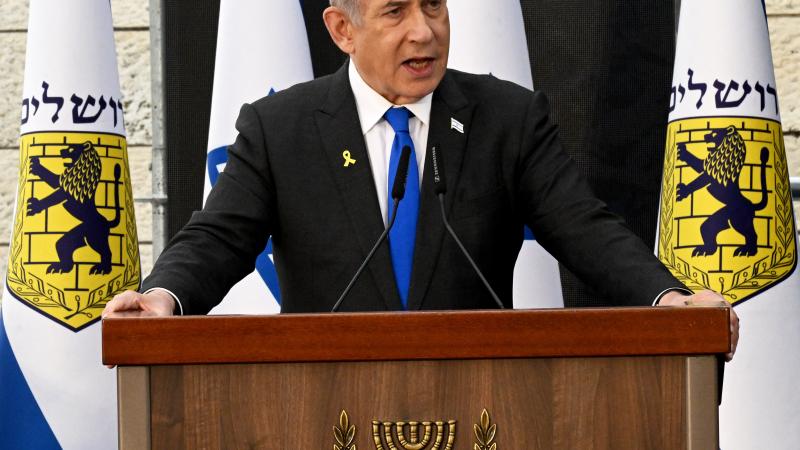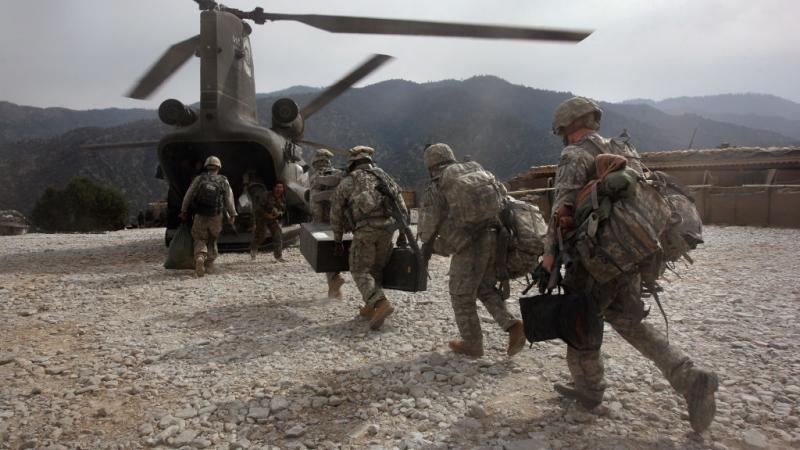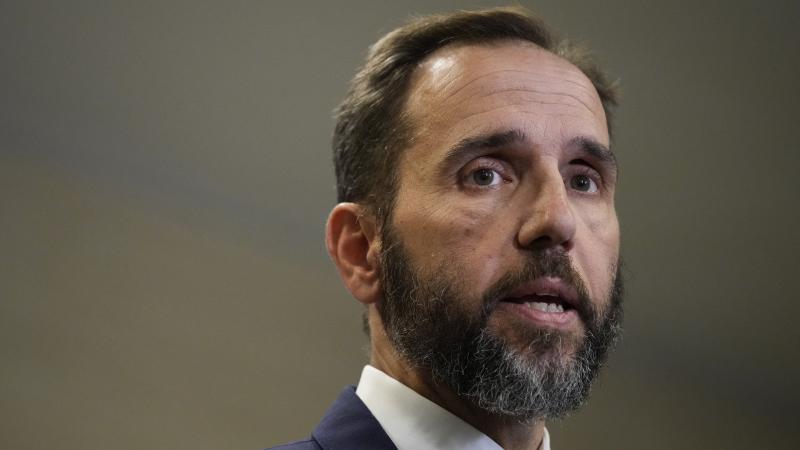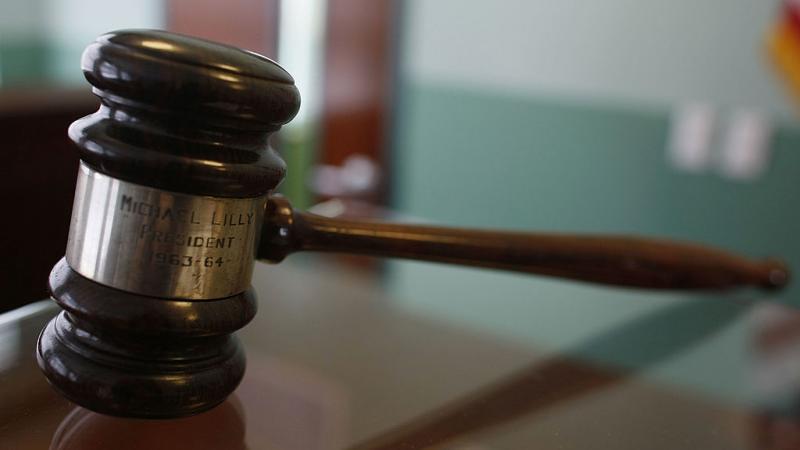Hamas defiant in face of calls to disarm, endangering Trump ceasefire
The terrorist group also enjoys growing popularity in the Gaza Strip, according to the most recent polling data of residents.
The disarming of Hamas, widely seen as an essential component of the Trump-mediated Gaza ceasefire, is no closer now than when large-scale fighting stopped last month.
Hamas, which is a U.S.-designated terrorist group, is, in fact, growing increasingly resistant to the terms of the ceasefire and hostage exchange deal that went into effect on Oct. 10. Ahead of the United Nations Security Council on Monday approving President Trump's peace plan – which includes an international stabilization force to police the ceasefire – Hamas rejected the idea of handing the rebuilding of Gaza and political control over to any foreign group.
According to polling data, the terrorist group has regained popularity in the Gaza Strip after reasserting its control in the territory. For example, a majority of Gazans and other Palestinians strongly oppose disarming Hamas.
Trump’s landmark 20-point plan for peace in Gaza also included a requirement for the terrorist group to lay down its arms or go into voluntary exile so that the strip could be rebuilt and remove the threat of Hamas against Israel.
Since then, the American president has reiterated his calls for Hamas to cease fighting or face a united international intervention to remove them from power, though it is unclear which countries besides Israel would be willing to use force to disarm the group.
Hamas and allied armed groups said the move would pave the way for foreign control that would strip Palestinians of self-rule, Al Jazeera reported.
Hamas’s violence against rivals inside the strip and continued unwillingness to disarm voluntarily have undermined the ceasefire and made it more likely that fighting will ultimately resume at some point in the future, experts say.
If Hamas does not comply, Trump suggested U.S. allies were prepared to invade the strip to “straighten out Hamas.” However, it is unclear which allies, besides Israel, would be willing to do so.
“Now we're at the critical point. I do not believe that anybody besides the IDF will be willing to do the difficult work of disarming Hamas,” Asher Fredman, Visiting Fellow at the Heritage Foundation’s Allison Center for National Security, told the John Solomon Reports podcast.
“On the other hand, if Hamas is not disarmed, then the next devastating war, which nobody wants is, you know, one year, two years, three years down the road and progress towards the vision of President Trump of the new Middle East Abraham accords will always be at the whim of Hamas,” he said.
“Because, if Hamas can reignite regional tensions by firing five rockets into Tel Aviv or into an Israeli city, then it has the ability to disrupt again and again this progress towards this regional cooperation and normalization, integration that we would all like to see,” Fredman also said.
The Trump administration has worked hard to preserve the fragile ceasefire between Israel and Hamas fighters. But Hamas’s efforts to reassert control over the territory formerly occupied by Israel has heightened tensions. For now, it appears Israel is also intent on preserving the ceasefire, responding only with limited retaliation for attacks on its troops.
Last month, as Israeli troops withdrew to the negotiated line of control, Hamas moved quickly to return to the formerly occupied areas, bringing with them weapons and a grudge against rival Gazan factions that threaten the terrorist group’s iron-fisted control of the Palestinian enclave, Just the News previously reported.
In that campaign, Hamas carried out public executions and punishments of alleged “collaborators, mercenaries, thieves, bandits” and those who cooperated with the Israeli occupation.
Hamas also used the opportunity to weaken its rivals. For example, the Doghmush family, members of which were prominent in the previous Gazan administration overthrown by Hamas in 2007, confirmed that its members had been attacked by Hamas fighters for alleged collaboration with Israel. The family, in a statement, said that 28 of its members were killed by Hamas after the Israeli withdrawal.
Further complicating the ceasefire, Hamas’s popularity among the people of Gaza has risen since fighting halted last month. As of October, 51% of Gaza residents are “satisfied” with Hamas performance in the war, up from a low point of 39% in September 2024, according to polling data gathered by the Palestinian Center for Policy and Survey Research.
A majority of Palestinians also reject calls from the U.S. and Israel for Hamas to disarm. Data show 55% of residents of the Gaza Strip oppose the disarming of Hamas as part of the ceasefire.
“To some extent, this war has proven to Gazans and others that Israel has failed to defeat it,” Khalil Shikaki, director of the Palestinian Center for Policy and Survey Research told the Wall Street Journal. “Hamas isn’t going to disappear tomorrow. We have to live with that.”
The polling data also showed that in theoretical elections in the Gaza Strip, a plurality would continue to support Hamas, further underscoring the group’s entrenched base in the enclave.
Hamas’s behavior suggests it is deliberately creating friction to signal its dissatisfaction with the current agreement,” Joe Truzman, a senior research analyst at the Foundation for Defense of Democracies and terrorism expert, said in a statement to Just the News last month.
Truzman also warned that it is unlikely Hamas will agree to disarm. This only becomes more unlikely as the group continues to enjoy popularity in the Gaza Strip.
Israeli Prime Minister Benjamin Netanyahu has long maintained that the conflict cannot permanently end until Hamas disarms and relinquishes control of the Gaza Strip. Israel views an armed Hamas on its border as a threat, especially after the deadly Oct. 7, 2023, terrorist attack by the group that sparked the war.
The Facts Inside Our Reporter's Notebook
Links
- 20-point plan for peace in Gaza
- said the move
- suggested U.S. allies were prepared to invade
- Visiting Fellow at the Heritage Foundationâs Allison Center for National Security
- worked hard to preserve
- Hamas moved quickly to return to the formerly occupied areas
- its members had been attacked by Hamas fighters
- popularity among the people of Gaza
- Data show
- told the Wall Street Journal
- warned that it is unlikely Hamas will agree to disarm
- has long maintained















